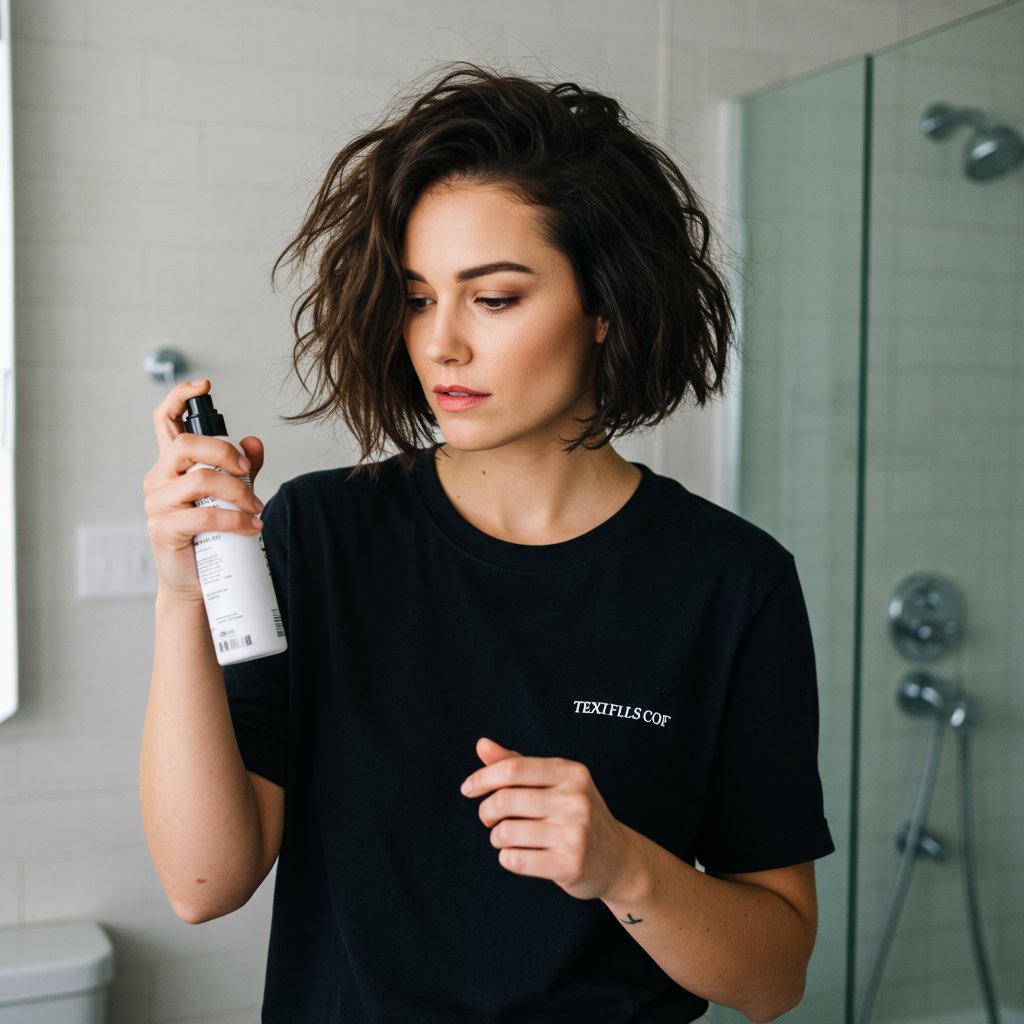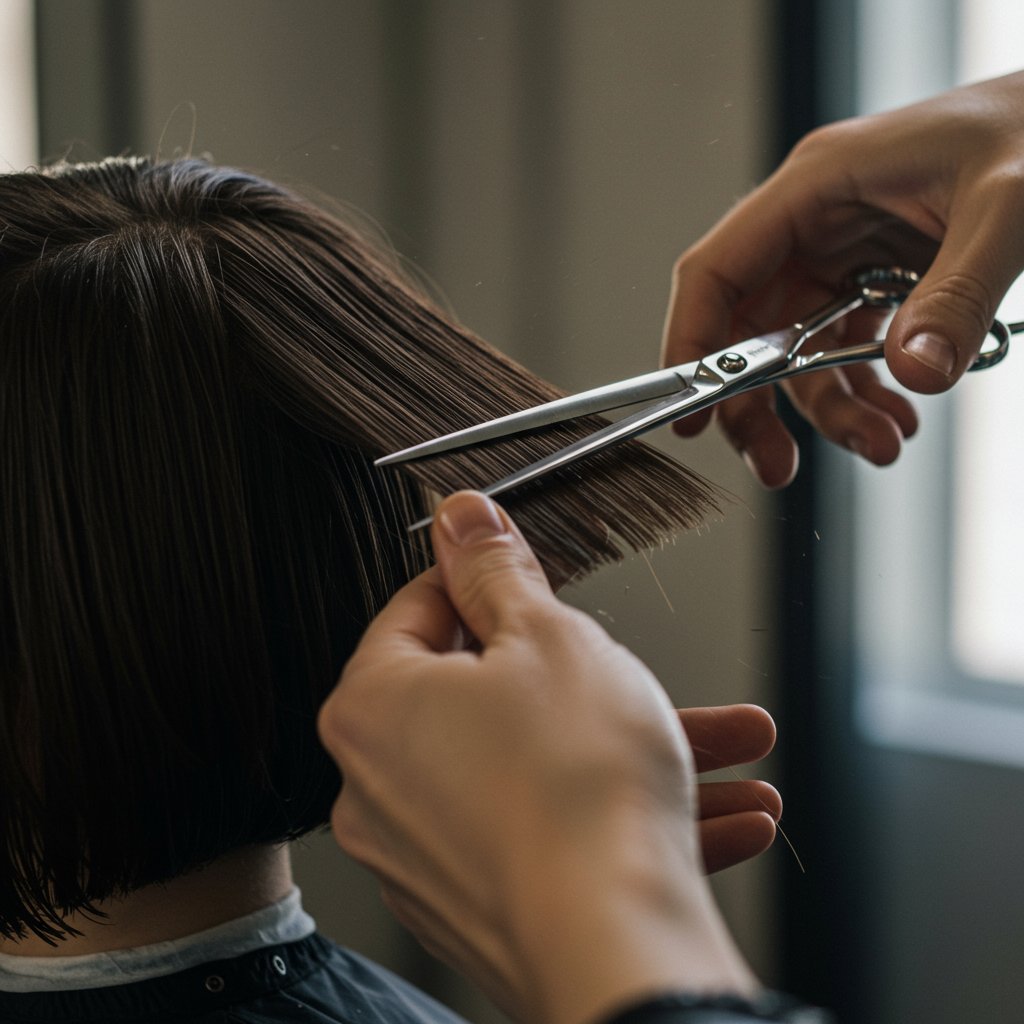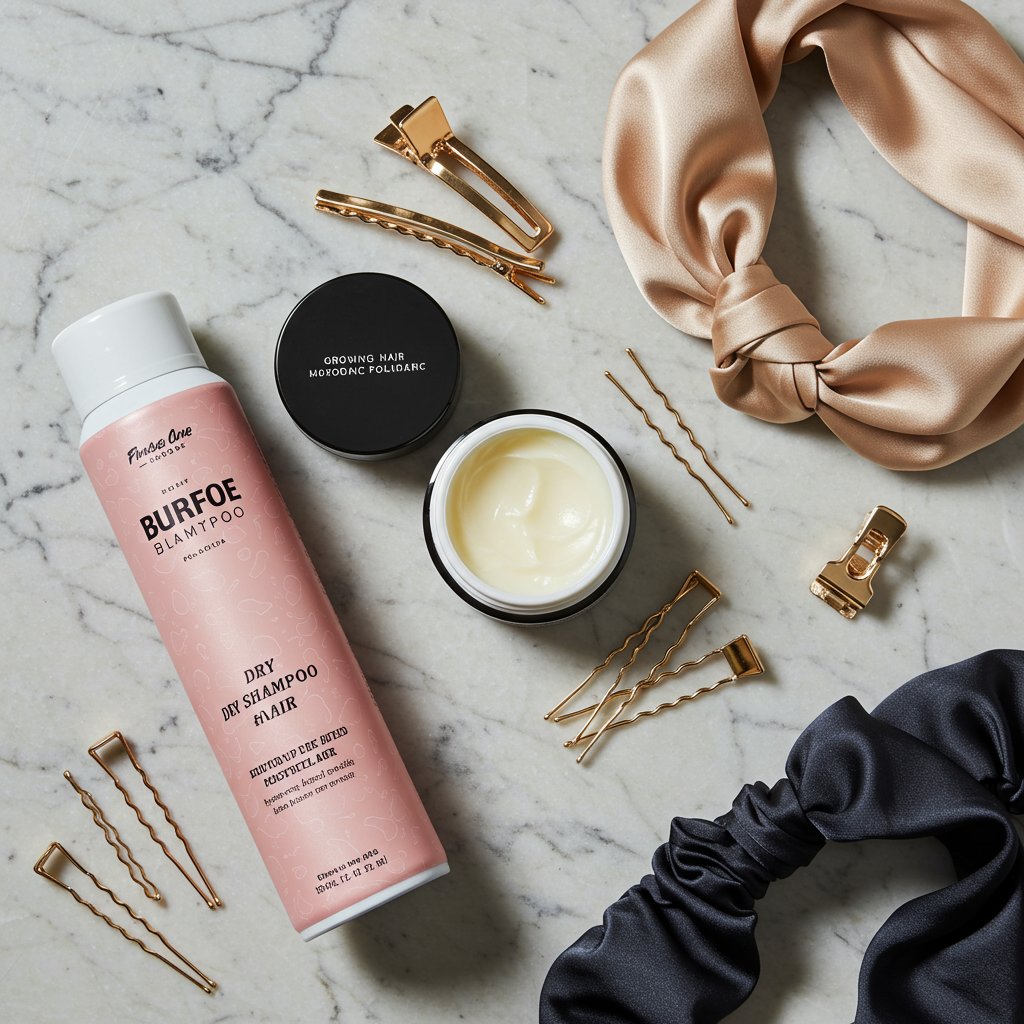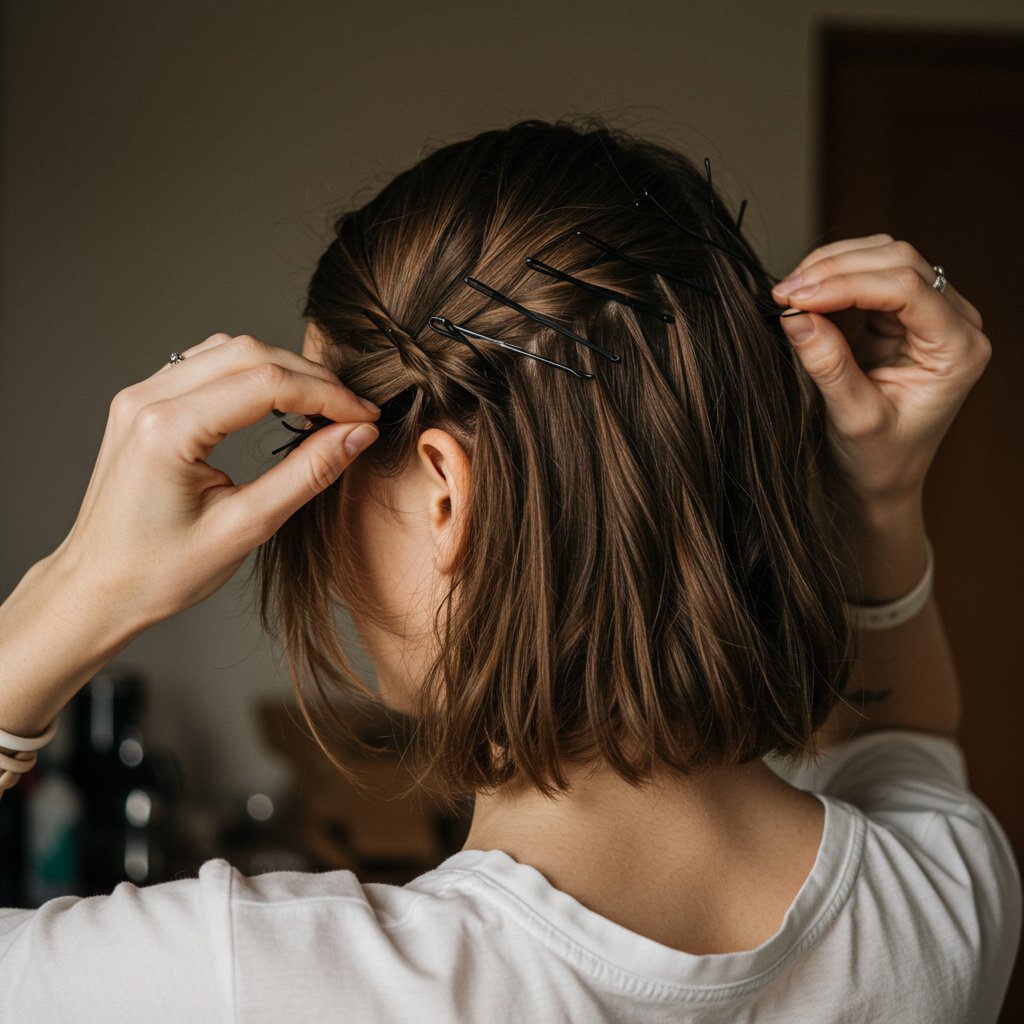Transitioning Hairstyles: The Ultimate Guide to Growing Out a Pixie Cut or Bangs | Pro Tips & Stages
From Chic Chop to Luscious Locks: Embracing the Journey of Growing Out Your Hair
Making the decision to get a pixie cut or bold bangs is a liberating experience. It’s a statement of confidence and style. But just as trends evolve, so do our personal style goals. The decision to grow out that chic chop is another journey altogether—one that requires patience, creativity, and a solid game plan. Many fear the dreaded 'awkward stage,' but with the right approach, transitioning hairstyles from a pixie cut or bangs can be a stylish adventure in its own right. This comprehensive guide will provide you with a stage-by-stage roadmap, pro styling tips, and essential care advice to ensure your grow-out process is as graceful and fashionable as the cut you started with.

Whether you're moving on from a pixie or letting your fringe flourish, the key is to see this transition not as a challenge to be endured, but as an opportunity to experiment with a multitude of new looks. From a sassy, grown-out pixie to a chic bob, and from side-swept bangs to elegant curtain styles, each phase has its own unique charm. We'll explore how strategic trims, the right products, and clever styling can turn potential hair frustrations into a series of stunning, confidence-boosting hairstyles. Get ready to fall in love with your hair at every length.
The Mental Prep & The Game Plan: Setting Yourself Up for Success
Before you even miss your first trim appointment, the most critical step in growing out a pixie cut or bangs is mental preparation. This journey is a marathon, not a sprint. The average rate of hair growth is about half an inch per month, so setting realistic expectations is paramount. Understand that there will be days when your hair has a mind of its own. Instead of getting frustrated, reframe these moments as opportunities to try a new accessory or styling technique. Patience will be your greatest asset, so embrace the process and celebrate the small victories, like the first time you can tuck your hair behind your ears or pull it into a tiny ponytail.

A crucial part of your game plan should involve a consultation with an experienced stylist. This isn't just about the final goal; it's about navigating the path to get there. A professional can assess your hair type, texture, and growth pattern to create a personalized grow-out strategy. They can map out a schedule for 'shaping' trims—appointments designed not to remove length, but to manage weight, blend layers, and prevent the dreaded mullet stage. Bring inspiration photos for every phase of the grow-out process, from a shaggy bob to a shoulder-length lob. This collaboration ensures you and your stylist are on the same page, turning the transition into a guided, manageable experience.
Navigating the Pixie Grow-Out Journey: Key Stages & Styles
Growing out a pixie cut is a multi-stage process, with each phase offering unique styling possibilities. Understanding these stages can help you anticipate changes and plan your looks accordingly, making the entire journey feel intentional and chic.

Stage 1: The "Grown-Out Pixie" to the Shaggy Bob (Months 1-4)
This initial phase is all about managing uneven lengths. The hair on top will start to grow longer, while the sides and back may lag. The key here is to embrace texture and volume. Use a texturizing spray or a light pomade to create a piecey, lived-in look that masks inconsistencies. This is also the perfect time to experiment with slicked-back styles using a firm-hold gel for a high-fashion, wet look. As the top gets longer, you can create a deep side part for dramatic volume. Small, decorative clips and pins can be your best friends, helping to tame unruly sections while adding a touch of style.Stage 2: The Bob and the Mullet Moment (Months 4-8)
This is often considered the most challenging stage. The back of your hair may start to grow faster than the sides, leading to the beginnings of a mullet. This is where your stylist's shaping trims are absolutely essential. They can trim the nape of your neck and texturize the back to keep the shape balanced, guiding your hair into a cohesive bob shape. During this time, you might achieve a short, jaw-length bob or a 'bixie' (bob-pixie). You can style it with soft waves using a small flat iron or curling wand to create movement and blend the layers. Headbands and scarves are also fantastic for pulling hair away from the face and adding a stylish element.Stage 3: The Shoulder-Length Lob (Months 8-12+)
Congratulations, you've made it past the most awkward phases! Your hair now likely reaches your shoulders, forming a long bob or 'lob'. This is one of the most versatile lengths. You have enough length for small ponytails, half-up styles, and elegant updos. This is a great time to focus on hair health, ensuring your ends are strong as they continue to grow. Continue with regular micro-trims every 8-10 weeks to remove any split ends and maintain a healthy shape. You can play with parting, try out braids, or perfect your beachy waves. The styling options are nearly endless, and you're well on your way to your long-hair goal.Conquering the Bangs Grow-Out: A Stage-by-Stage Guide
Growing out bangs is a much quicker process than a full pixie, but it comes with its own set of styling puzzles. The goal is to seamlessly integrate the shorter front pieces with the rest of your hair.

Stage 1: The "Side-Swept" Era (Weeks 1-6)
As your bangs first start to grow, they'll reach that tricky length where they're constantly in your eyes. The easiest and most stylish solution is the side-sweep. Create a deep side part and use a light-hold hairspray or a dab of pomade to coax them over to the side. A quick blast with a blow dryer while holding them in place will help them cooperate. This creates a soft, asymmetrical look that is both practical and chic. Small, discreet bobby pins that match your hair color can also be used to secure them for a fuss-free day.Stage 2: The "Curtain Bang" Transition (Weeks 6-12)
Once your bangs are long enough to be parted down the middle (usually when they hit the bridge of your nose), you can embrace the trendy curtain bang style. Use a round brush or a flat iron to style them away from your face, creating a soft, face-framing 'swoop' on either side. This is an incredibly flattering look that highlights your cheekbones. A bit of dry shampoo at the roots can add volume and prevent them from looking greasy as they are in closer contact with your forehead.Stage 3: The "Face-Framing Layers" Integration (Weeks 12+)
When your bangs reach your cheekbones or jawline, they can be officially blended into the rest of your hair. Ask your stylist to cut long, face-framing layers that connect the grown-out bangs with your overall length. This will create a seamless, layered look that adds movement and dimension to your hair. At this point, they are no longer 'bangs' but rather a beautiful, intentional part of your hairstyle. You can style them as you would the rest of your hair, whether straight, wavy, or curly.The Unsung Hero: Why Regular Trims and Shaping Are Non-Negotiable
The most common mistake people make when growing out their hair is avoiding the salon entirely. It seems counterintuitive, but skipping trims is the fastest way to an unmanageable, unhealthy mess. Growing out hair isn't about letting it grow wild; it's about guiding it into a series of beautiful, intentional shapes. Regular appointments for 'shaping' or 'dusting' are crucial. These aren't full haircuts; they are strategic micro-trims designed to maintain a style and promote healthy growth.

For a pixie grow-out, a stylist will focus on trimming the nape and around the ears, preventing the style from becoming bulky or mullet-like. They will texturize the hair to remove weight, which helps the different lengths blend more harmoniously. This process turns what could be a shapeless mop into a deliberate succession of styles—from pixie, to shaggy bob, to lob. For bangs, trims help blend the shorter pieces into face-framing layers, preventing a disconnected, 'grown-out' look. These appointments, scheduled every 6-8 weeks, are the secret weapon to a graceful and stylish transition.
Your Transition Toolkit: Essential Products & Accessories
Having the right products and tools at your disposal can make all the difference between a frustrating hair day and a great one. Your styling needs will evolve as your hair grows, so building a versatile toolkit is key. For shorter, piecey stages, a light-hold wax or pomade is perfect for defining texture without stiffness. As your hair gets longer, a texturizing sea salt spray will become your go-to for adding body and creating effortless waves.

Don't underestimate the power of accessories. A curated collection of bobby pins, decorative clips, headbands, and silk scarves can instantly solve a styling dilemma. Use them to pin back awkward pieces, add a pop of color, or completely change your look on days when your hair isn't cooperating. On the product front, dry shampoo is a non-negotiable for adding volume and absorbing oil, especially for bangs. A quality heat protectant is vital if you're using irons or blow dryers to shape your hair, and a weekly deep conditioning mask will keep your lengths strong and hydrated, preventing breakage and split ends that can sabotage your progress.
Nurturing Growth: Promoting Healthy Hair from the Inside Out
While styling tricks manage the outside, true hair health starts from within. To encourage your hair to grow as quickly and strongly as possible, focus on a holistic approach. A balanced diet rich in vitamins and minerals is foundational. Incorporate foods high in biotin, iron, zinc, and protein, such as eggs, spinach, nuts, avocados, and fish. Proper hydration is also essential, so be sure to drink plenty of water throughout the day.

Scalp care is another critical component. A healthy scalp is the bedrock of healthy hair. Consider incorporating a gentle scalp scrub into your routine once a week to exfoliate dead skin cells and remove product buildup, which can clog follicles. Regular scalp massages—which you can do for a few minutes each day—can stimulate blood flow to the hair follicles, potentially encouraging growth. Finally, be mindful of lifestyle factors. Minimize stress, get adequate sleep, and protect your hair from harsh environmental elements like sun and chlorine. These practices create the optimal internal and external environment for your hair to thrive.
Quick Tips for a Graceful Grow-Out
- Embrace Accessories: Headbands, scarves, and statement clips are your best friends. They can instantly tame an unruly style and add a chic focal point.
- Play with Your Part: Switching from a center part to a deep side part can dramatically change your look and help hide uneven lengths.
- Texture is Everything: Use sea salt sprays, texturizing powders, or pomades to create a piecey, deliberate style that makes awkward lengths look intentional.
- Try Braids and Twists: Even with short hair, small braids or twists along the hairline can be a stylish way to keep growing bangs out of your face.
- Slick It Back: For a sophisticated and edgy look, use a strong-hold gel or pomade to slick your hair back. This works beautifully at the grown-out pixie stage.
- Don't Neglect Hair Health: Use weekly deep conditioning treatments and hair masks to keep your ends healthy and prevent breakage, which is crucial for retaining length.
- Consult Your Stylist Regularly: Don't skip your shaping appointments. A professional can guide your hair through each stage, ensuring it always looks its best.

Frequently Asked Questions About Growing Out Hair
How long does it take to grow out a pixie cut?
On average, hair grows about six inches per year. To grow a pixie cut to a shoulder-length bob, you can typically expect it to take 12 to 18 months. However, this can vary based on your individual hair growth rate, hair health, and the starting length of your pixie.How can I hide my bangs while they grow out?
There are many stylish ways! You can sweep them to the side, braid them along your hairline, use cute clips or bobby pins to secure them, or hide them with a headband or scarf. Once they are long enough, parting them in the middle for a 'curtain bang' look is a popular and flattering option.Should I avoid heat styling during the grow-out process?
Not necessarily, but you should be smart about it. Heat styling can be a valuable tool for shaping awkward stages. The key is to always use a high-quality heat protectant spray and use the lowest effective temperature setting on your tools. Try to incorporate heat-free days into your routine to give your hair a break.What's the best way to deal with the "mullet" stage?
The best defense is a good offense: regular shaping trims with your stylist. They can texturize and trim the hair at the nape of your neck to keep the growth balanced and prevent the back from overpowering the sides. This helps guide your hair into a more uniform bob shape.Do hair growth supplements actually work?
While a balanced diet is the most important factor, some people find supplements containing biotin, collagen, keratin, and other vitamins beneficial. They can help support healthy hair growth by filling nutritional gaps. However, it's always best to consult with a healthcare professional before starting any new supplement regimen.How often should I get a trim when growing out my hair?
It's recommended to get a 'shaping trim' or 'dusting' every 6 to 8 weeks. This isn't a full cut to remove length, but rather a maintenance appointment to clean up split ends, refine the shape, and ensure your hair is growing out in a healthy, manageable way.Conclusion: The Destination is Worth the Journey
Transitioning your hairstyle from a short pixie or bangs is a testament to patience and an exercise in creativity. While it may seem like a long road, every stage of the grow-out process offers a new opportunity to redefine your style and experiment with looks you may have never considered before. By setting realistic expectations, partnering with a skilled stylist, and equipping yourself with the right tools and techniques, you can navigate this journey with confidence and grace.
Remember to focus on nurturing your hair's health from the inside out and to embrace the versatility that each new length brings. The awkward stages are only as awkward as you let them be. With a positive mindset and a strategic approach, you'll find that growing out your hair is not just a waiting game, but a rewarding and stylish transformation. Before you know it, you'll have reached your desired length, armed with a whole new repertoire of styling skills and a deep appreciation for your hair's incredible versatility.


